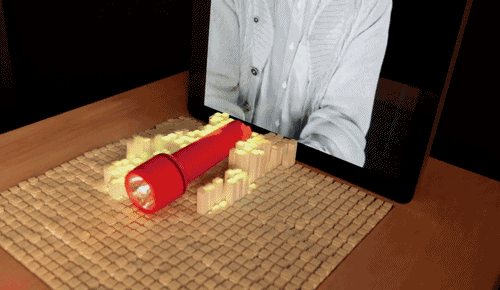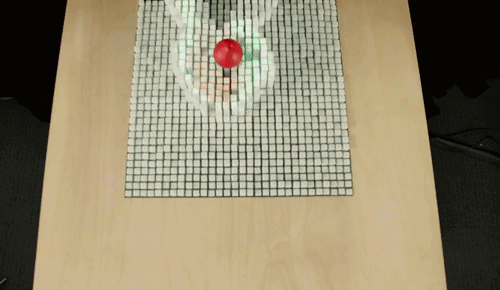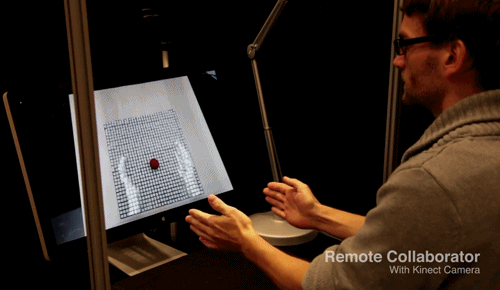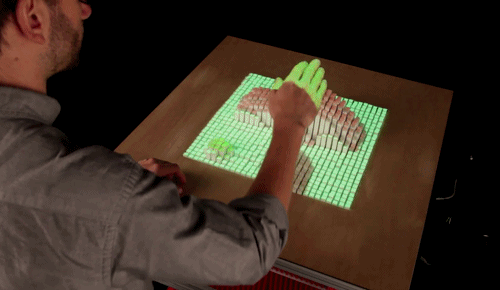Read, reblog, and resonate!
MIT - Blog Posts

Chris Williams
Born in New York City, Chris Williams considers Potomac, Maryland, to be his hometown. A private pilot and Eagle Scout, Williams is a board-certified medical physicist and holds a doctorate in physics from MIT. https://go.nasa.gov/49YJJmf
Make sure to follow us on Tumblr for your regular dose of space!
One Year Into Our Planet-Hunting TESS Mission

Our Transiting Exoplanet Survey Satellite (TESS), launched last year on April 18, is completing a year in space, surveying the skies to find the closest, most exciting planets outside our solar system for further study. Worlds that TESS is hunting for include super-Earths, rocky planets, gas giants, and maybe even some Earth-sized planets — and much, much more! TESS is scanning the whole sky one section at a time, monitoring the brightness of stars for periodic dips caused by planets transiting (that is, passing in front of) those stars. So far, TESS has found 548 candidates and 10 confirmed exoplanets.

Since its launch, TESS has orbited Earth a total of 28 times. TESS has a unique elliptical orbit that circuits around Earth twice every time the Moon orbits. This allows TESS’s cameras to monitor each patch of sky continuously for nearly a month at a time. To get into this special orbit, TESS made a series of loops culminating in a lunar gravitational assist, which gave it the final push it needed.

Did you know that TESS has some serious mileage? The spacecraft has traveled about 20 million miles so far, which works out to an average of about 2,200 miles per hour. That’s faster than any roadrunner we’ve ever seen! This would be four times faster than an average jet. You’d get to your destination in no time!

TESS downloads data during its closest approach to Earth about every two weeks. So far, it has returned 12,000 gigabytes of data. That’s as if you streamed about 3,000 movies on Netflix. Get the popcorn ready! If you total all the pixels from every image taken using all four of the TESS cameras — which is about 600 full-frame images per orbit, you’d get about 805 billion pixels. This is like half a million iPhone screens put together!

When the Kepler Space Telescope reached the end of its mission, it passed the planet-finding torch to TESS. Where Kepler's view was deep — looking for planets as far away as 3,000 light-years — TESS's view is wide, surveying nearly the entire sky over two years. Each sector TESS views is 20 times larger than Kepler's field of view.

TESS will continue to survey the sky and is expected to find about 20,000 exoplanets in the two years it'll take to complete a scan of nearly the entire sky. Before TESS, several thousand candidate exoplanets were found, and more than 3,000 of these were confirmed. Some of these exoplanets are expected to range from small, rocky worlds to giant planets, showcasing the diversity of planets in the galaxy.
The TESS mission is led by MIT and came together with the help of many different partners. You can keep up with the latest from the TESS mission by following mission updates and keep track of the number of candidates and confirmed exoplanets.
Make sure to follow us on Tumblr for your regular dose of space: http://nasa.tumblr.com.

Display and Keyboard (DSKY)
The display and keyboard (DSKY) is the user interface to the Apollo Guidance Computer (AGC). It has an array of indicator lights, numeric displays, and a calculator-style keyboard. Commands were entered numerically, as two-digit numbers: Verb, and Noun. Verb described the type of action to be performed and Noun specified which data were affected by the action specified by the Verb command.
https://www.instagram.com/spaceexploration_genz/
https://www.vsual.co/shop/space-exploration-gen-z
https://www.redbubble.com/people/astro3antica/shop

Apollo Display and Keyboard (DSKY)
The Display and Keyboard (DSKY) was the main interface between the crew and the Apollo Guidance Computers which controlled the Command/Service Module and the Lunar Module.
https://www.instagram.com/spaceexploration_genz/
https://www.vsual.co/shop/space-exploration-gen-z
https://www.redbubble.com/people/astro3antica/shop
I would sure like to see something like The Hyperloop or Evacuated Tube Technology come to be a common form of Long-Distance Travel someday!

MIT Reveals its Version of Hyperloop Transit Pod
Tired of being stuck in traffic on the highway or waiting endlessly for a delayed subway? Almost three years ago, Elon Musk envisioned the Hyperloop, a new type of public transit that would whisk commuter-filled pods efficiently across hundreds of kilometers in a matter of minutes via tubes; and of course, only second to teleportation in terms of overall coolness.
Among a number of startups trying to get in on the competition sponsored by Musk’s company SpaceX, a student team from the Massachusetts Institute of Technology emerged earlier this year as the front-runner when it won the competition’s design phase. On Friday, MIT finally unveiled the prototype pod that it will test this summer at a 1-mile racetrack near SpaceX’s headquarters in Hawthorne, California.
Photograph by MIT
CosmoCorps BONUS! MARS Curiosity Panoramic Vision!
Mars Panorama - Curiosity rover: Martian solar day 437 in The World
=^.^= https://rebelmouse.com/CosmoCorps/




inForm
Incredibly impressive interactive dynamic display which demonstrates potential possibilities working with adaptive form both locally and remotely - video embedded below:
inFORM is a Dynamic Shape Display that can render 3D content physically, so users can interact with digital information in a tangible way. inFORM can also interact with the physical world around it, for example moving objects on the table’s surface. Remote participants in a video conference can be displayed physically, allowing for a strong sense of presence and the ability to interact physically at a distance. inFORM is a step toward our vision of Radical Atoms: tangible.media.mit.edu/vision/
tangible.media.mit.edu/project/inform/
More Here

“Put simply, it's worth looking at those folks who answer against what they believe everyone else will say, since they may be smarter than everyone else.”

This is the Green building tonight, the tallest one in Cambridge, on MIT campus.
Photo via @peteymit: http://bit.ly/17CBIzX
do you think MIT would take an unironical picture of a very complex Minecraft world (castle and town) that i will build as reference to my path towards becoming an architect?
this is a serious question.

here’s my week’s work of the Main Castle (I need to finish the roofs, make the bridge towers sit on mounds, and detail more of the outside, but you get the idea)
